Menu
Feeling good about the way you look can affect your relationships, your work, your energy levels, and just about anything and everything else you do. Having an unwanted or embarrassing birthmark can cause you to feel self-conscious, and can affect the way others perceive you and maybe even the way you perceive yourself!



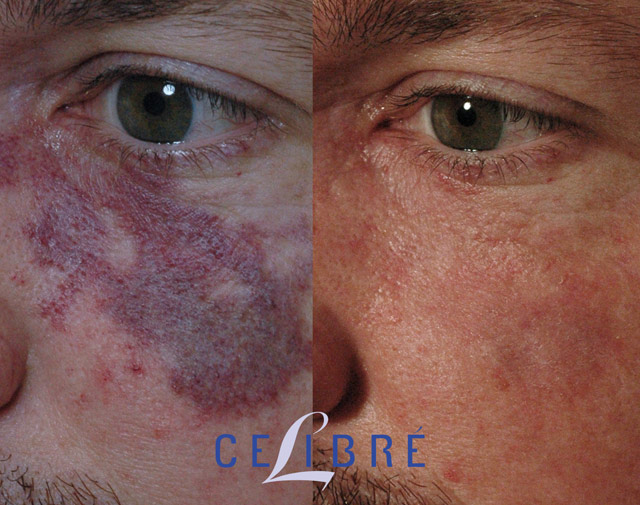
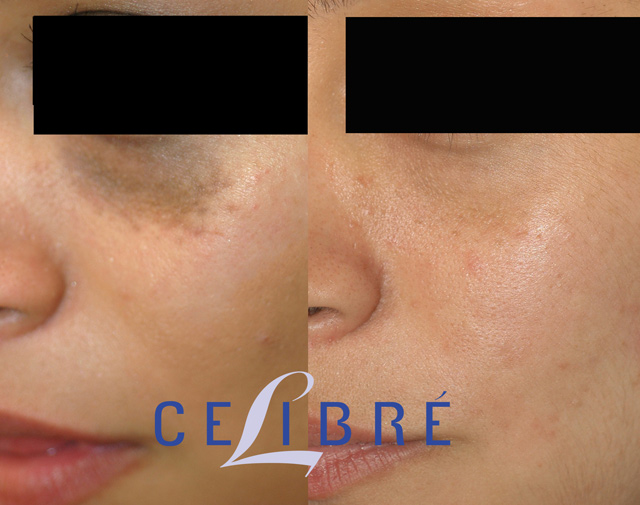

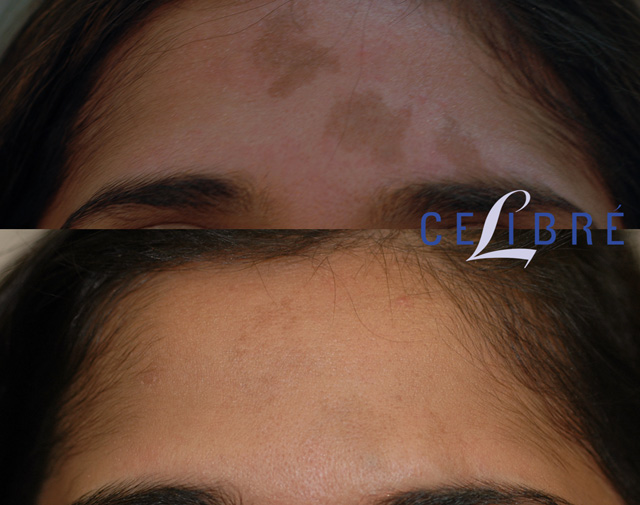

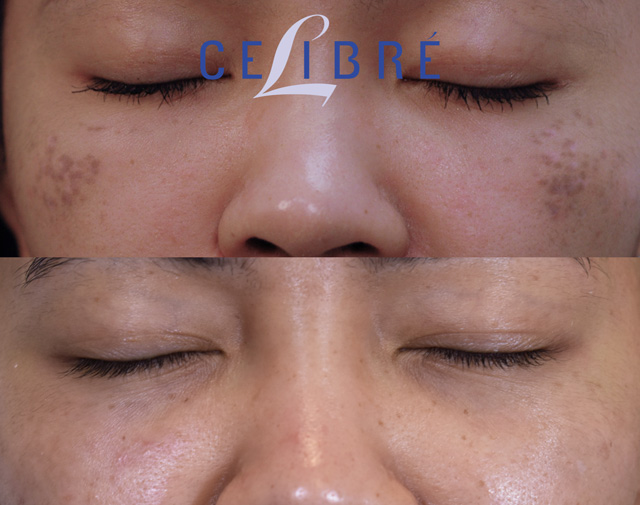

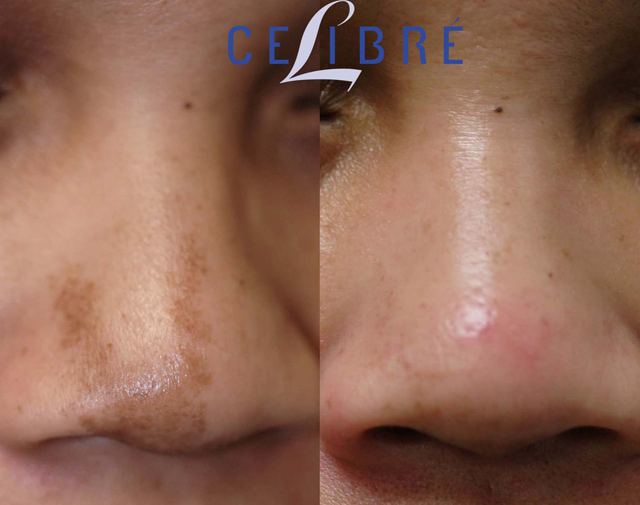

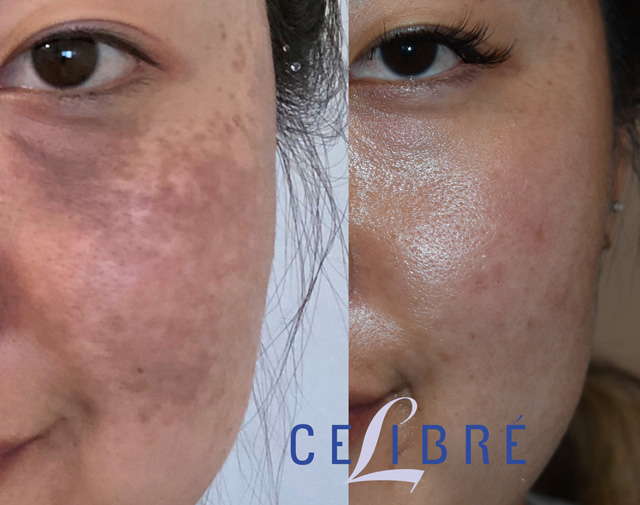
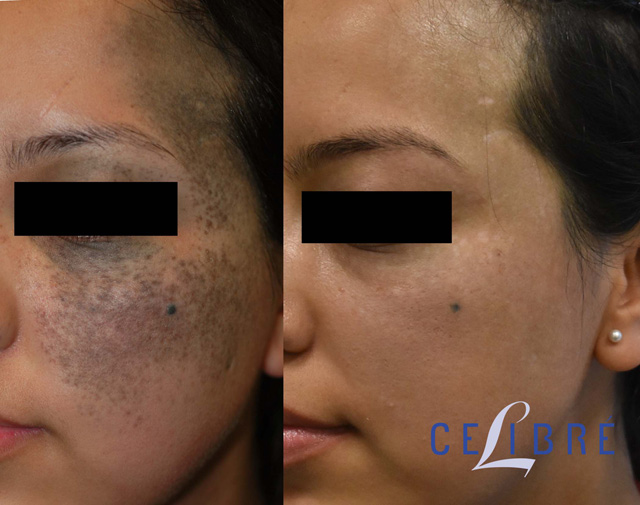
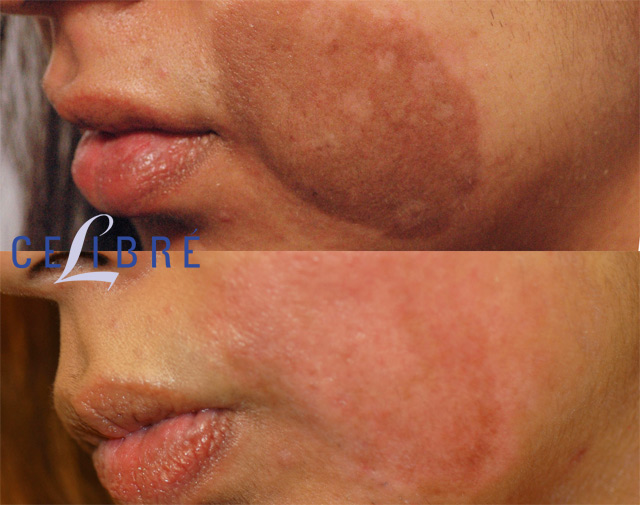

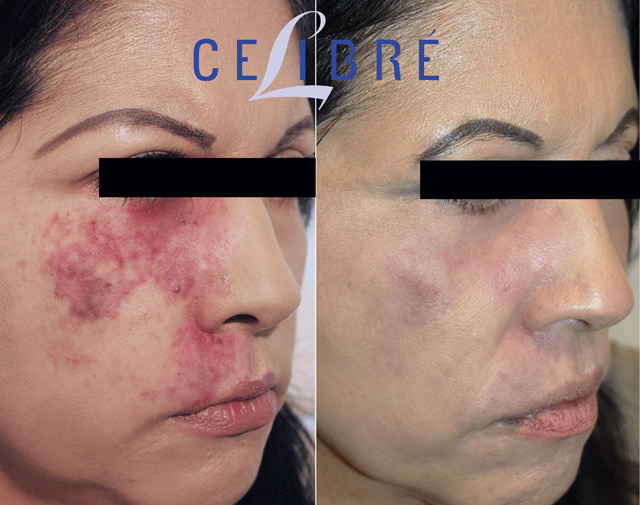

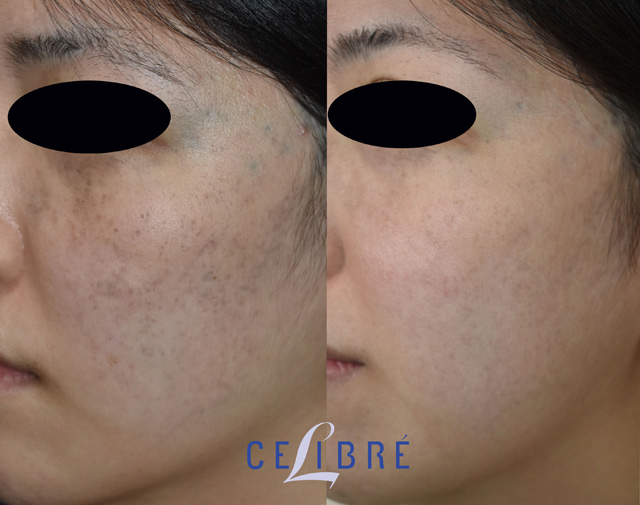
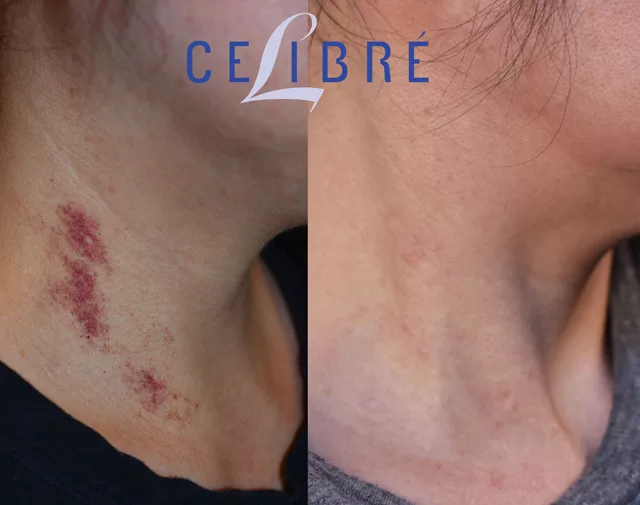
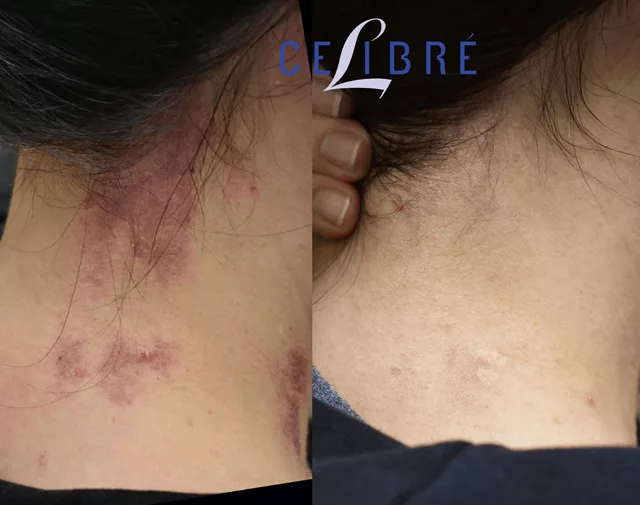
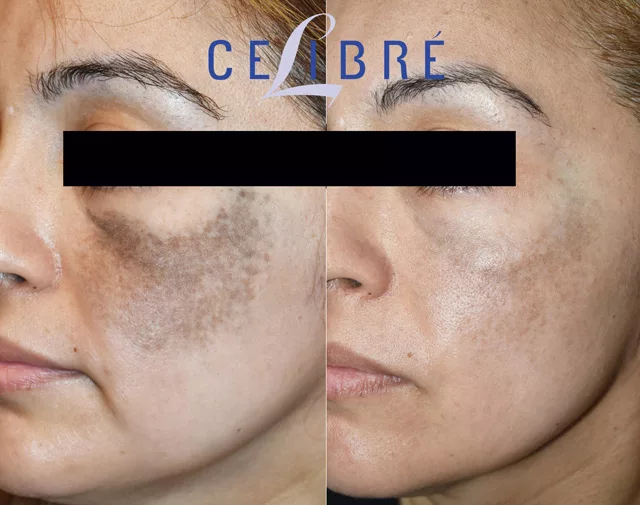
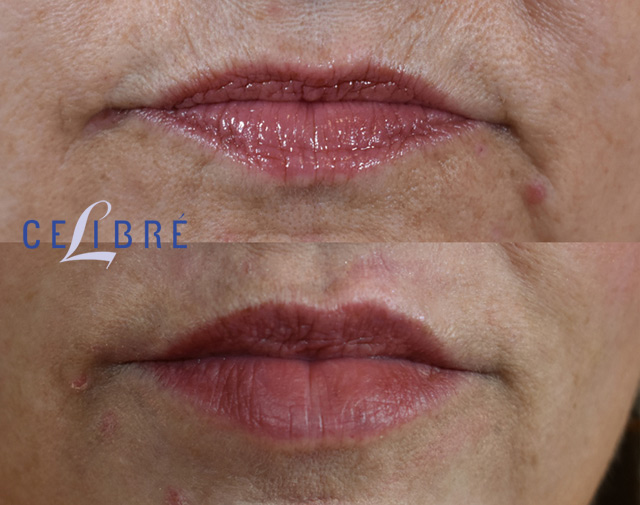


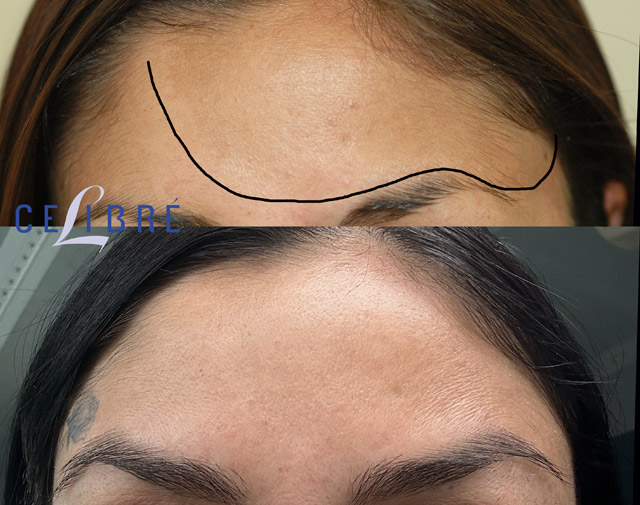
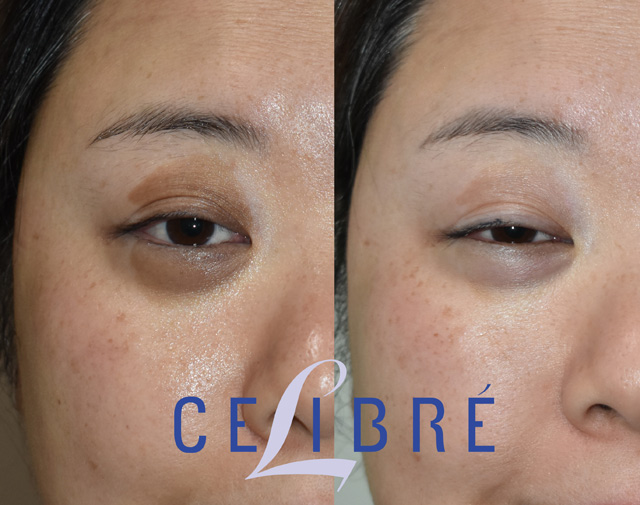

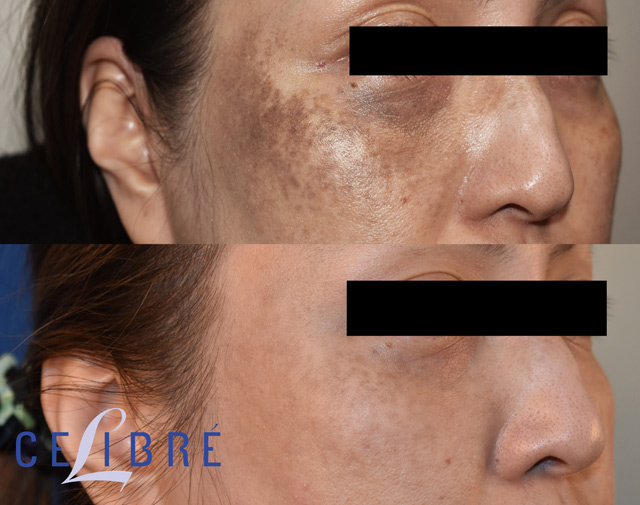

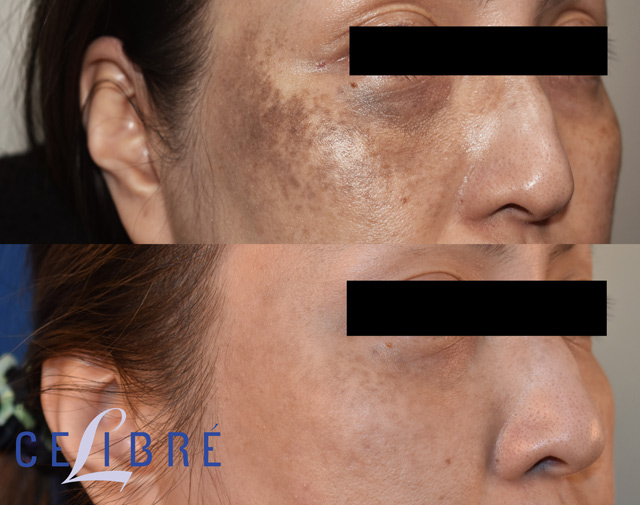

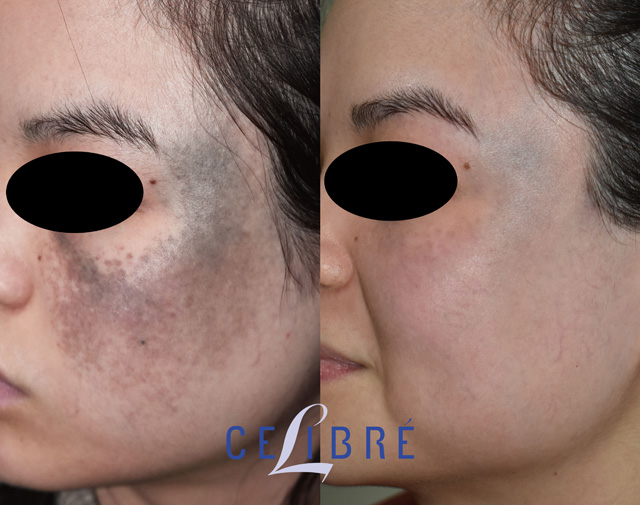

































Not everyone “grows into” their birthmarks; while some people see them as their trademark or beauty mark, others wish they’d never have to see them again. If you’re in the latter camp, please read on. We have some good news for you. At Celibre Medical, we use powerful q-switched lasers, ScitonProfractional technology, and pulsed dye lasers to get rid of your red or brown birthmark. Birthmarks can come in all shapes and sizes. And they usually fall into one of two categories: red and brown.
First, there are some birthmarks that you are born with, others that develop within a few weeks of being born, and still, others that develop in adulthood.
Brown birthmarks are generally the result of one of two different processes: either you developed more skin pigment (melanin) in an area, or you developed more skin tissue in an area. The most common types of brown birthmarks are the café-au-lait mark, Nevus of Ota, Nevus, and Ito, and congenital mole or nevus. Speckled nevi and ABNOM birthmarks are two others.
The café-au-lait mark is the type where you’ve simply developed more pigment or melanin in the area than the surrounding skin. These birthmarks are made up of cells called “giant melanosomes” which contain a high density of melanin. They are typically light brown in color and are flat and smooth. You tend to get them on the trunk, buttocks, and legs. Café-au-lait spots are well suited for treatment with the q-switched laser, but removing them from the face is easier than the body.
Both Nevus of Ota and Ito are a type of flat, darkly pigmented (green, blue, or grey appearing) birthmark that usually respond well to the removal with q-switched lasers. They are similar in that both will appear on one side of the body and the melanin or pigment within them is located deep in the second layer of skin – the dermis. Nevus of Ota typically affects the forehead and facial area around the eye (sometimes the eye itself too) while Nevus of Ito is found on the shoulder and upper arm areas.
Congenital moles or nevi are a bit different from all other types of brown birthmarks. These also contain more melanin, which is what gives them their brown to dark brown color, but they also have raised skin tissue associated with them. They can form on any part of the body, even the face. If you’ve got one of these, you may not be a great candidate for treatment with lasers. As a rule, we do not use lasers for raised lesions because they do not respond well to treatment.
We don’t know why some form brown birthmarks and others don’t. We do know that certain ethnicities tend to have an increased incidence of pigmented birthmarks. Hispanics, Asians, and African Americans all have more birthmarks than babies of other ethnic backgrounds.
Port-wine stains – also called stork bites – are red birthmarks that occur most often on the face head and neck. These birthmarks contain a large number of blood vessels located abnormally close to or at the surface of the skin.
Q-switched lasers are a great option for treating many types of brown birthmarks because the lasers
target excess pigment (melanin) in the skin. They are an effective way to help anyone with any skin type (Caucasian to African American) get rid of a brown birthmark. Q-switched lasers destroy the cells that contain the excess pigment and they are replaced by new cells without the memory of that discoloration.
Conversely, red birthmarks are treated with pulsed dye lasers. We use the most common type of pulsed dye laser, the Candela V-Beam, for red birthmarks. Because the light in a pulsed dye laser is attracted to the red color of blood, it heats the small vessels that make up the birthmark, driving them below the surface so that the skin appears a more consistent color.
If you thought help for your birthmark wasn’t available, think again. We would love the opportunity to sit down and develop a treatment plan to help you get rid of your birthmark. Give us a call today. We are here to answer all of your questions and help get you looking and feeling better.
